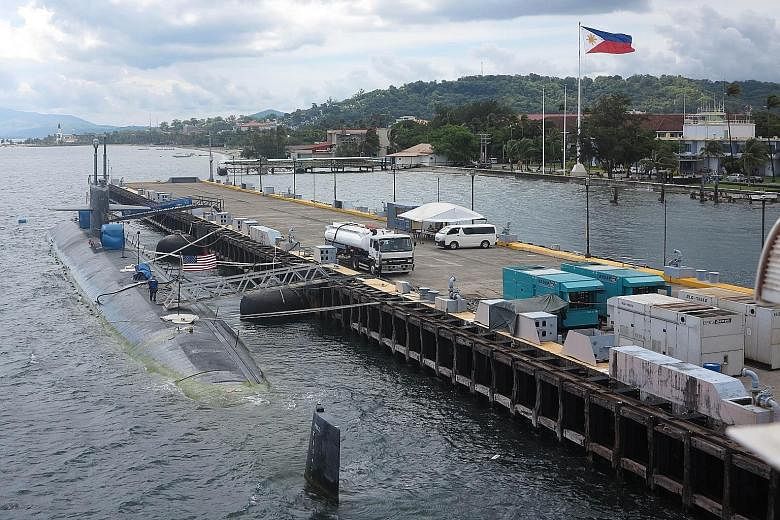SUBIC BAY (Philippines) • In a flash of anti-colonialist fervour nearly a quarter-century ago, lawmakers in the Philippines expelled the United States from an enormous naval base here, then the largest overseas outpost of the US military.
Promising to break free from the "shackles of dictatorship", they declared that foreign troops would never return.
But with China forcefully pressing its claim to a vast expanse of sea west of here, the Philippines is now debating whether to welcome the US Navy back to Subic Bay, which served as a haven for bruised battleships and weary soldiers during the Vietnam War.
It is also asking Washington for hundreds of millions of dollars in new funding to strengthen its military, one of the weakest in Asia.
The change of heart is just one sign of the shifting strategic calculations in the region as President Xi Jinping of China seeks to reinforce Beijing's claim to almost all of the South China Sea by turning reefs into islands and putting military facilities on them.
Satellite photos taken last week appear to show China preparing to build a third airstrip on one of the new islands.
US officials have objected to the build-up in contested waters, and the dispute is expected to be high on the agenda when Mr Xi meets President Barack Obama in Washington on Thursday.
Even as China has accelerated construction, the Obama administration has struggled to coordinate a response in Asia, where many countries are not sure how hard they should push back against China, the region's economic giant, and how much they should rely on the US, its dominant military power.
Several nations lay claim to parts of the South China Sea, through which pass some of the world's busiest shipping routes. But China's push to establish the sea as its own has hit closer to home in the Philippines than almost anywhere else.
An island with a civilian Filipino population is in the disputed area, and Chinese forces have occupied reefs and shoals the Philippines once controlled.
"The fight hasn't even started yet, and it looks like the Philippine government has already surrendered," said Mr Renato Etac, 35, a fishing boat captain who says Chinese vessels there routinely chase and try to ram his ship.
Last year, the government in Manila signed a 10-year agreement that would let the US station troops, weapons and materials at bases across the Philippines, setting the stage for an American return to several facilities, including Subic Bay and the sprawling Clark Air Base nearby. But the pact has been tied up by a legal challenge.
Filipinos hold favourable views of the US, polls show. There is ambivalence, however, about allowing US troops to be stationed in the country - a concern amplified by the Philippines' history as a US territory from 1898 to 1946 - and anxiety over how China might respond.
Washington has expressed frustration with the delay in carrying out the agreement, which Mr Obama announced with fanfare during a visit to Manila last year.
The case is not expected to be decided in the Philippine Supreme Court until later this year at the earliest. If it goes forward, the pact would give the US the ability to operate a stronghold on the shores of the South China Sea, less than 800km from the new islands built by the Chinese.
NEW YORK TIMES

